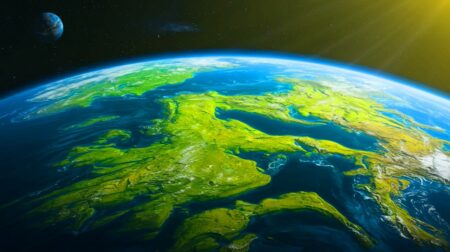Once the novel coronavirus that causes COVID-19 arrived in the United States early this year, it began to spread seemingly uncontrollably and carries on doing so.
The reasons for that are complex, but one answer could well lie in the extent of air pollution across much of the country, according to a team of scientists at Washington University in St. Louis.
Why some people get ill with the virus while others don’t and how ill people end up getting owes a lot to their age and general health. Yet it can also owe a lot to their environment, specifically the amounts of tiny airborne pollutants known as PM2.5 in the air they breath.
Long-term exposure to high levels of air pollution can make people more susceptible to COVID-19, says Rajan Chakrabarty, an associate professor who lead the research.
“Evidence is emerging that long-term exposure to ambient PM2.5 (particulate matter with aerodynamic diameter 2.5 μm or less) associates with higher COVID-19 mortality rates, but whether it also associates with the speed at which the disease is capable of spreading in a population is unknown,” the scientists explain.
They add that they have established a relationship between long-term exposure to ambient PM2.5 in the US and COVID-19 basic reproduction ratio R0.
“We checked for more than 40 confounding factors,” Chakrabarty said. “There was a strong, linear association between long-term PM2.5 exposure and R0.” The reason is that PM2.5, or airborne particles with a diameter of 2.5 micrometers or less, can enter a person’s lungs and cause damage to their respiratory health. That makes their lungs less able to deal with the invasive virus.
When the scientist and a colleague examined where the coronavirus spread fastest, they saw that air quality tended to be fairly poor in those areas. In addition, the scientists found that black carbon particles in the air act as a kind of catalyst. “When there is soot present, PM2.5 has more of an acute effect on lung health, and therefore on R0,” Chakrabarty observed.
“[R]ecent reversal of environmental regulations which weaken limits on gaseous emissions from power plants and vehicles threaten the country’s future air quality scenario,” Chakrabarty said. “Instead of working to resolve this issue, these reversals may be setting us up for another pandemic.”
Did you like it? 4.5/5 (30)








